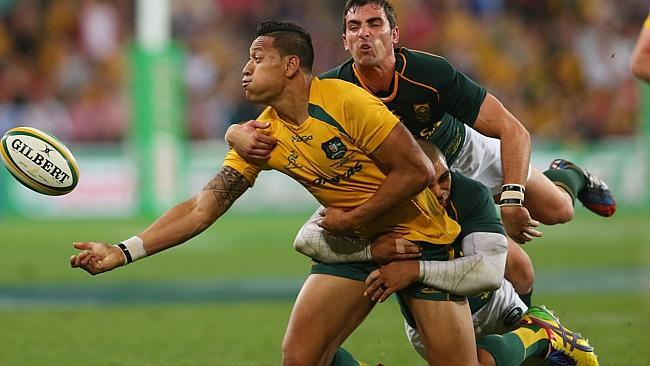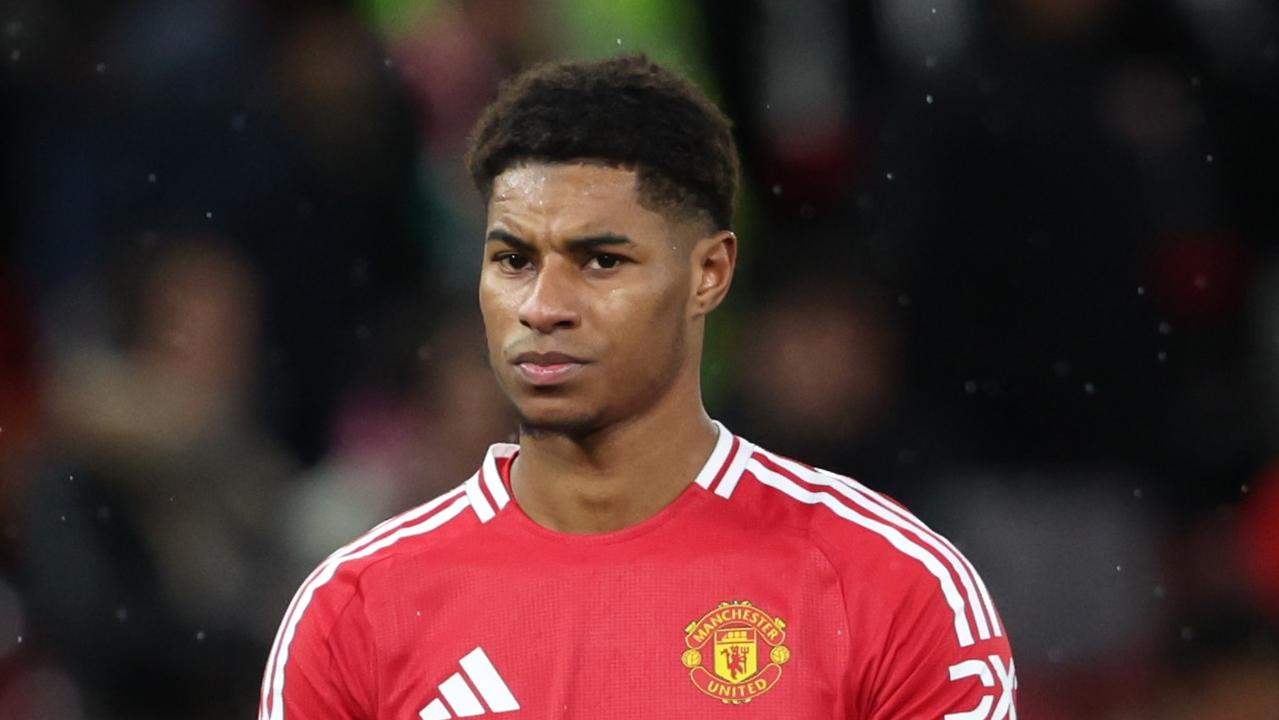IRB's forward pass ruling sending game backwards
A CORRUPTION of physics and common sense has caused chaos.

WHEN is a forward pass not a forward pass? Answer: never. Rugby law was supposed to be definitive - if the ball is propelled from the hand and its trajectory carries it nearer the opposition dead-ball line, then it is forward.
But if you have watched rugby anywhere this year you may well believe the law has just changed profoundly. Suddenly, rank forward passes are all the rage, to the loud consternation of many in the game, including thousands of bewildered paying followers.
A few examples. When Chris Wyles's pass put Chris Ashton away to score in the Saracens-Leicester game at Allianz Park just before Christmas, it was forward from every angle. The pass from Australia's Israel Folau that made a try for Joe Tomane in the recent Wales-Australia game was also clearly forward. Wales coach Warren Gatland complained bitterly, forgetting that the pass with which Leigh Halfpenny had made a try for Owen Williams against Tonga the previous week had resembled soccer's diagonal through-ball.
On Boxing Day, TV coverage of the match between the Dragons and the Blues revealed at least four forward passes, one of which led to a try. But play was allowed to go on. For all these decisions, no blame should really be attached to the referees (referee Wayne Barnes in the Saracens match was brilliant), or the television match officials to whom the incidents are so often referred.
The blame lies, above all, in some techno-corridor of power at the International Rugby Board. A corruption of physics and the law of relative velocity and a bogus concept of what constitutes entertainment have led to utter carnage. Essentially, it all began two years ago when a clever Australian coach marked parallel lines on the field a metre apart and filmed one player passing to another across different distances while running at various speeds. The clip is on the internet.
The reference points provided by the lines gave us a huge surprise - they made it clear that very often, when a pass from a player on the move was delivered to another player behind him, the combined momentum of the runner himself, and of the pass, propelled the ball forward. The law of relative velocity. Jump off the back of a lorry, and you will still fall farther up the road than the point at which you jumped.
The video clip with the lines on the pitch also found that the longer the pass, the farther forward it drifted, with the longest pass of all in the exercise going a full 5m forward. Without the lines, all still seemed normal, legitimate and backwards. Add the lines and the reference points, and it was a very different story.
This was the springboard for the IRB to usher in, quietly, what has become known as the momentum rule, and to confirm it, quietly, for this season. Let's make no bones about it. The forward pass is now allowed. The edict seems to be: we know some balls may be going forward when it looks as if they are going backwards, therefore we can attribute almost any forward pass to relative velocity physics and the referee doesn't have to blow for it.
Note that there has been no official change in the law, not even a footnote. The cascading down of the new interpretation has been so sketchy that you come across many referees and players, and tens of thousands of bewildered fans, wondering why passes in rugby are now suddenly allowed the same leeway as those by a quarterback in American football.
Now, instead of ruling on the trajectory of the pass, referees have been told to focus on the hands of the passer. If they were pointing vaguely backwards as the pass was delivered then the pass, ballooning horribly forward or not, is judged to be legal. And so, preposterously, we are asking referees to try to spot what could be one rapid and maybe unseen flick of the wrists, and the angle of the hands at that flick, rather than take into account the passage of a large oval ball. Understandably, many referees are unable to make the call, so requests for a ruling from the TMO are increasing crazily, holding up more games.
More games will be decided by the referee rather than the players. Nobody has bothered to explain what was wrong with the existing law and why it cannot be policed by a referee, his TMO and, even better, by the two touch-judges whose duties are now mainly decorative. But then you consider the dawn of the momentum ruling. When Wyles passed to Ashton, the touch-judge was so close he could have tapped Ashton on the shoulder. But how could he make a call? He had to take into account whether the ball had gone forward, which it had, but he also had to compute the physics - the speed of the runner, the length of the pass, the angle of the palms. No wonder he failed.
Here's a plan. If it looks forward, it's a scrum. If it doesn't look forward, who cares?
The Australian video illustrates that under the momentum rule many passes apparently delivered backwards are well forward, but without lines drawn every yard you cannot spot them. Play on. But if passes that look legal are forward, it therefore follows that if a pass does look forward then it must be horribly so. Rugby, forward-passing and backwards-thinking, has made a compete ass of itself with its laws.
THE TIMES


